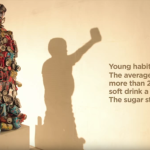With 1.95 billion daily active users on Facebook and Instagram combined, it’s not outrageous to say that we’ve reached peak social media. As the pendulum begins to swing the other way, reports continue to surface on the link between social media and feelings of loneliness, depression, jealousy and anxiety. With this, plus the recent data scandals front of mind, the question on everyone’s lips is whether social media is bad for us. Has it impacted our humanity negatively? Irreversibly?
The real question isn’t one of positive or negative impact, it’s a question of impact to what degree. Social media is a form of persuasive technology, as are smartphones. The godfather of persuasive technology, psychologist B.J. Fogg resides in Pao Alto, California, in the Stanford Persuasive Technology Lab, a lab purpose build to produce “machines designed to change humans”. He counts one of the Instagram founders as one of his students. If we broaden out the query to: “Has persuasive technology, rather than just social media, destroyed Humankind?” we are asking a much meatier question.
Persuasive technology and design, fundamentally, is about creating digital environments that modify certain parts of a users’ psyche, better than the real world equivalent does. For example, socialising via Instagram translates into the exchange of likes and comments, which is very simple and very satisfying. By contrast, the real-life human interactions are layered and complex, rarely straight forward and can leave us confused. The success of persuasive technology success boils down to three primary factors: motivation, ability and triggers. When talking about social media; the motivator is social acceptance and the desire to avoid being socially rejected; the ability is the ease of use of the app and the triggers are notifications and news feeds. What this means is the simplicity of persuasive design, whilst demanding constant attention has the power to definitively change human behaviour.
Fogg’s paper on persuasive tech is fascinating and goes much deeper than there is time to go into here, it explores dopamine release, reward, attention and addiction. The point to note is this paper includes but is not limited to social media. Social media is a flower on a behaviour-change tree, its roots run deep into UX design and technology that we don’t even realise we’re being influenced by. So whilst social media may have created a new behaviour loop, it hasn’t independently destroyed any part of our humanity.
Where do brands fit into this behaviour loop? A lot of the time they are disruptive, especially if you look at a user’s behaviour using Facebook’s or Instagram’s news feed. Social media applications are most certainly designed to keep users returning, but what they are returning for is not advertisements or branded content. It’s interaction with and acceptance from other humans. Now more than ever, if brands want to integrate into this loop, they absolutely must focus on human insights and what drives users on to these platforms to interact.
Ramsay Brown, the founder of Dopamine Labs, an L.A. persuasive tech start-up said, “We have now developed a rigorous technology of the human mind, and that is both exciting and terrifying. We have the ability to twiddle some knobs in a machine learning dashboard we build, and around the world, hundreds of thousands of people are going to quietly change their behaviour in ways that, unbeknownst to them, feel second-nature but are really by design.”
It’s easy to look at these technologies as inherently bad, however, similar to blockchain technology, its potential is huge and nowhere near exhausted. There are scores of examples of persuasive technology built to improve our life experience. For example, to encourage people to exercise more, remember to take their medicine on time, improve their driving or make friends with their neighbours. This is where brands can insert themselves and add value, as many already do. For example Nike+, an implicitly social application that fully integrates with Facebook and Instagram and leverages persuasive design in a positive way. Or Headspace, who fill Facebook and Instagram newsfeeds with 10-second meditations to relieve stress and anxiety.
To answer the question of to what degree has social media impacted how we interact as humans, it has so immensely, and as it continues to evolve, so will our behaviour in response to it. So yes, persuasive technology, namely, social media, is changing how we behave, however it’s part of a larger eco-system of persuasive technology that would thrive with or without it.
Ultimately, what we must remember is that whilst technologies will always change, our humanity will not.
Siona Singletary is Strategy Director at Creative PR and Social Media Agency Poem





















































































































































































































































































































































































































